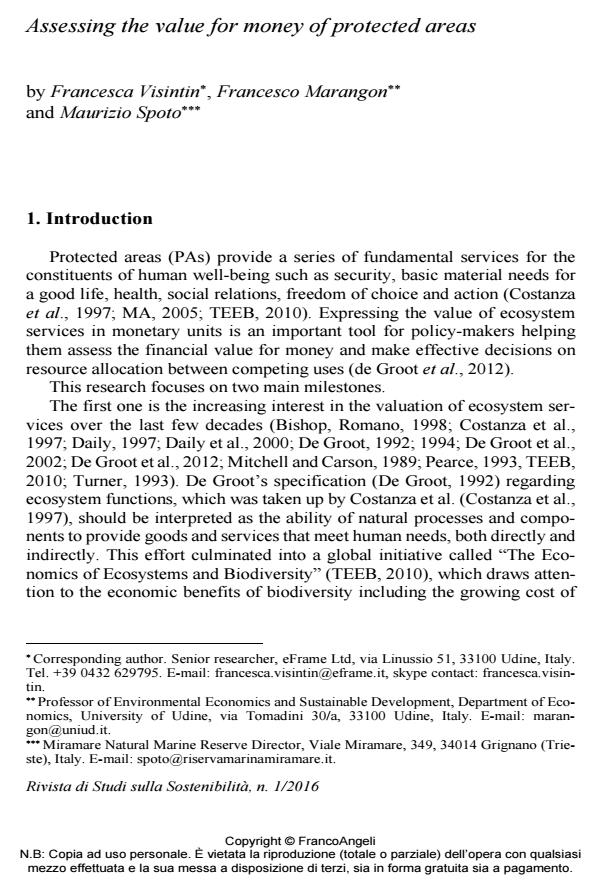Assessing the value for money of protected areas
Titolo Rivista RIVISTA DI STUDI SULLA SOSTENIBILITA'
Autori/Curatori Francesca Visintin, Francesco Marangon, Maurizio Spoto
Anno di pubblicazione 2016 Fascicolo 2016/1
Lingua Italiano Numero pagine 21 P. 49-69 Dimensione file 272 KB
DOI 10.3280/RISS2016-001006
Il DOI è il codice a barre della proprietà intellettuale: per saperne di più
clicca qui
Qui sotto puoi vedere in anteprima la prima pagina di questo articolo.
Se questo articolo ti interessa, lo puoi acquistare (e scaricare in formato pdf) seguendo le facili indicazioni per acquistare il download credit. Acquista Download Credits per scaricare questo Articolo in formato PDF

FrancoAngeli è membro della Publishers International Linking Association, Inc (PILA)associazione indipendente e non profit per facilitare (attraverso i servizi tecnologici implementati da CrossRef.org) l’accesso degli studiosi ai contenuti digitali nelle pubblicazioni professionali e scientifiche
The increasing unavailability of public financing leads decision-makers to cut funds for protected areas without considering the ensuing environmental, economic and social impacts. The research investigated what and how much value the Miramare Natural Marine Reserve (Italy) was able to create from public funds. The environmental accounting approach was adopted, and environmental costs and benefits taken into account. Environmental benefits assessed ecosystem services such as gas regulation, nutrient cycling, biological control, food production, nursery, raw materials, recreation and science. The model demonstrated that the value produced by the Protected Area fully covered the money spent by public authorities by a rate of 2.5.
Parole chiave:Area marina protetta, contabilità ambientale, servizi ecosistemici.
- Disaster-related losses of ecosystems and their services. Why and how do losses matter for disaster risk reduction? Yvonne Walz, Sally Janzen, Liliana Narvaez, Andrea Ortiz-Vargas, Jacob Woelki, Nathalie Doswald, Zita Sebesvari, in International Journal of Disaster Risk Reduction 102425/2021 pp.102425
DOI: 10.1016/j.ijdrr.2021.102425 - Environmental values and willingness to pay for a protected area: a segmentation of Italian university students M. B. Forleo, L. Romagnoli, N. Palmieri, in International Journal of Sustainable Development & World Ecology /2019 pp.45
DOI: 10.1080/13504509.2018.1488298
Francesca Visintin, Francesco Marangon, Maurizio Spoto, Assessing the value for money of protected areas in "RIVISTA DI STUDI SULLA SOSTENIBILITA'" 1/2016, pp 49-69, DOI: 10.3280/RISS2016-001006